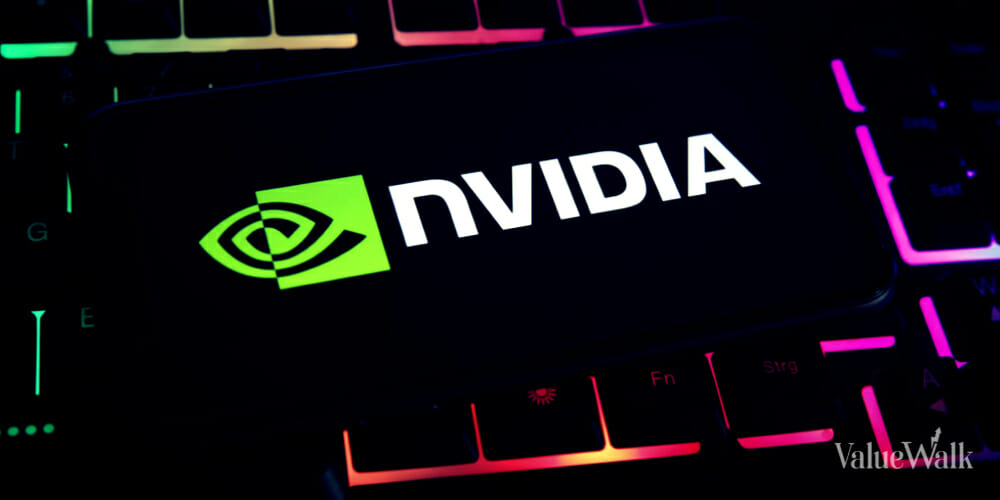A few years ago, Apple (NASDAQ:AAPL) was the one stock that could propel or sink the entire stock market on any given day. However, today’s kingmaker and potential market breaker is NVIDIA (NASDAQ:NVDA), the world’s second-most-valuable company that’s about to overtake Apple in the number-one position.
For momentum-focused stock traders, NVIDIA has been a dream come true. Every time a financial-press pundit comes out and declares that NVIDIA is overvalued and NVDA stock is stretched, the buyers come out in full force and stretch it even further.
Yet, some overeager traders learned a harsh lesson on Friday about how richly valued companies can punish stock chasers. When quarters’ or even years’ worth of expected growth have already been baked into the pie, even a juggernaut like NVIDIA can have a tough time perpetuating the bullish narrative.
NVIDIA’s market cap shed $128 billion
It was quite a turnaround on March 8, when NVDA stock surged to $973 in the morning but then sputtered out of control after the first hour of trading. Stunningly, the stock closed at $875.28, down 5.55% for the day, before falling even further in after-hours trading.
According to Barron’s, this was NVIDIA stock’s steepest single-day, percentage-wise decline since May 31, 2023. It wouldn’t have felt so severe if the stock had started the day in the red, but it was the sudden U-turn that made the event so remarkable.
It was also memorable because just the previous day, NVDA stock had helped propel the S&P 500 (SPX) to a new all-time-high closing price. Furthermore, Friday’s decline broke a six-day winning streak for NVIDIA’s shareholders.
Observing that other chipmaker names also fell that day, Wedbush Securities analyst Matthew Bryson seemed to suggest that NVIDIA stock’s abrupt descent wasn’t just about that company.
“It’s broader than NVIDIA,” Bryson assured investors.
Is it really broader than NVIDIA though? Is it possible that the chipmaking sector played follow-the-leader that day, with NVIDIA leading and peers like Intel (NASDAQ:INTC) and Advanced Micro Devices (NASDAQ:AMD) following?
What’s known for certain is that NVDA stock’s drop caused a whole lot of consternation, along with substantial financial losses. Believe it or not, NVIDIA’s market capitalization declined $128 billion on Friday, representing the worst single-day market-cap drop on record for this company.
Desperately seeking reasons
With earnings season mostly in the rear-view mirror, it’s challenging to identify a company-specific catalyst for NVDA stock’s six-day rise and single-day fall. Most likely, the stock’s growth spurt could be attributed to a continuation of artificial intelligence (AI) hype, along with leftover euphoria from NVIDIA’s impressive fourth-quarter fiscal 2024 earnings report.
The 5.5% drop in NVIDIA stock is harder to explain. There wasn’t any unfavorable, company-specific news to cite that day or the previous evening. NVIDIA was doing just fine, evidently.
Granted, there was a macro-level event that may have rocked the boat. Specifically, the Bureau of Labor Statistics reported that the U.S. economy had added 275,000 non-farming jobs in February, versus the 200,000 jobs that economists had expected.
Thus, the market may have concluded that a hotter-than-anticipated jobs market may dissuade the Federal Reserve from cutting interest rates at this month’s meeting. It’s difficult to determine how much this concern contributed to the fall-off in NVIDIA stock.
Other news items included David Tepper’s Appaloosa Management hedge fund selling part of its stake in NVIDIA. ARK Investment Management’s Cathie Wood also warned during a Bloomberg interview about a potential correction “in the chip space.” However, it’s doubtful that those developments would move the market’s needle much.
Valuations don’t matter… until they do
Upon second thought, maybe Wood’s cautionary note isn’t off the mark. She noted that, following a spate of AI graphics processing unit (GPU) panic buying last year, inventories of NVIDIA’s products have grown.
“So that is suggesting that there was probably a lot of double and triple ordering as the word ‘shortage’ was making the rounds, and then those inventories will have to be digested,” Wood explained.
It’s conceivable then that the perceived halo surrounding NVIDIA may finally be wearing off. To that, we can add the argument that the market can only tolerate NVIDIA’s valuation for so long.
On that topic, I’ll defer to Scott McNealy, the former CEO of Sun Microsystems (now a private company).
“At 10 times revenue, to give you a 10-year payback, I have to pay you 100% of revenue for 10 straight years in dividends,” McNealy clarified 20 years ago.
NVIDIA’s forward price-to-sales (P/S) ratio is 19.55, and its trailing 12-month P/S ratio is an eye-watering 35.47. McNealy’s admonition about companies trading at 10 times sales seems quaint in today’s market.
Thus, just as the market anticipated NVIDIA’s AI-driven growth, now it may be bracing for a right-sizing, or what alarmists might call the “great reset.” If Friday was a warning shot, NVIDIA’s shareholders still have time to take profits; otherwise, they could end up chasing pennies in the path of a massive, AI-powered steamroller.












